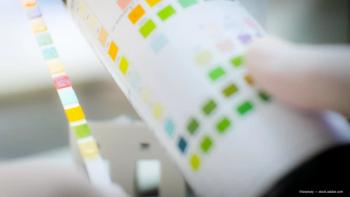
Low-vision rehab could improve quality of life
Low-vision rehabilitation can lead to significant improvements in overall quality of life, according to study published in the April issue of Investigative Ophthalmology and Visual Science.
Low-vision rehabilitation can lead to significant improvements in overall quality of life, according to study published in the April issue of Investigative Ophthalmology and Visual Science.
Ecosse L. Lamoureux, from the University of Melbourne, Australia and colleagues conducted a study to evaluate the effectiveness of a multidisciplinary low-vision rehabilitation programme on quality of life, measured using the Impact of Vision Impairment (IVI) instrument.
A total of 124 female and 68 male (mean age, 80.3 years) first-time referrals to low-vision clinics were assessed before and after rehabilitation. Rasch analysis was used to estimate the three IVI subscales and overall values on an interval scale. Analysis of Variance between groups (ANOVA) was used to determine whether presenting visual acuity (VA) had an interaction effect with rehabilitation change. Cohen d values were used to estimate the magnitude of change and the standardized response mean (SRM) procedure was used to determine the clinical significance of such changes.
Most subjects (62%) had age-related macular degeneration (AMD) and were categorized as moderately to severely vision impaired (<6/18; 78%). Following rehabilitation, significant improvements were recorded for the overall IVI score (p=0.006) and two subscales: 'reading and accessing information' and 'emotional well-being' (p=0.007 and 0.009, respectively). However, no significant improvement was recorded for the 'mobility and independence' subscale (p=0.07). The level of post-rehabilitation improvement was found to be relatively moderate (Cohen d=0.17-0.30) and clinically modest (SRM=0.22-0.42).
The authors concluded that significant improvements in quality of life can be achieved through low-vision rehabilitation, however, the magnitude and clinical significance of rehabilitation-induced gains are modest. They suggest that further investigation in other models of rehabilitation are required to optimize the quality of life gains that could be achieved.
Newsletter
Get the essential updates shaping the future of pharma manufacturing and compliance—subscribe today to Pharmaceutical Technology and never miss a breakthrough.













































